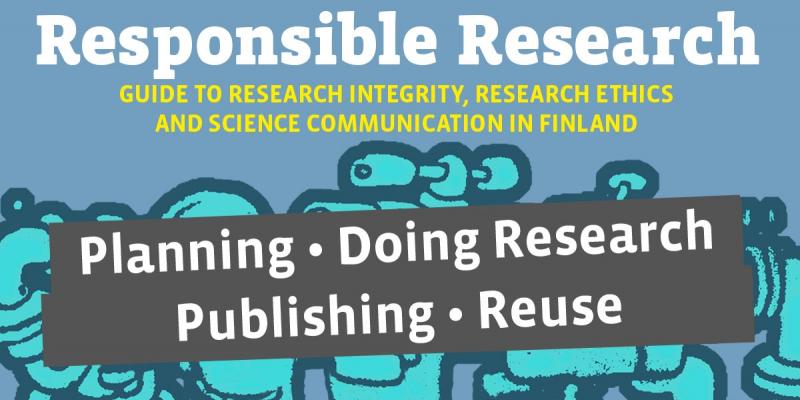The production of accessible content and services is in everyone’s interests – and also a requirement specified in law.
Accessibility and unobstructed access are terms that describe the opportunity for inclusion. Unobstructed access usually refers to the physical environment –housing and mobility, for example. Accessibility is often used in reference to online services and publications, but it can also refer to atmosphere and attitudes.
Indeed, attitude is a meaningful way of approaching accessibility. Accessibility takes into account the diversity of people. It is not about providing special treatment for certain groups: the key point is that we all have different circumstances, needs and constraints on our activities. These needs can be temporary or permanent. Furthermore, people’s needs and constraints are not the same, even within specific groups. Accessibility, for example in terms of easy-to-use services and comprehensible texts, serves everyone.
Accessibility is not about providing special treatment for certain groups: the key point is that we all have different circumstances, needs and constraints on our activities.
Accessibility can be both technical and content-related. Examples of technical accessibility include ensuring that an online service can be used with screen-reader software or a keyboard only. The structure and user interface of the online service must be designed so that the navigation is easy for the user.
In practice, technical accessibility tends to become the responsibility of those who design and implement online services. When contracts for new services or websites are made, it is important to remember to require accessibility competence and an approach that takes accessibility consistently into consideration. Accessibility is the responsibility of the service provider.
Surveys and forms must also be made accessible, along with mobile and tablet versions of websites and services. An important aspect of user interface design is to test the service with a large group of people at an early stage, so that the service and the website can be made as easy to use as possible.
In addition to technical factors, accessibility is also associated with accessible content, meaning content that opens itself up to as many users as possible. The text must be clear and easy to understand. It may be good to provide information in forms other than just text, such as videos and images, but these should also be made accessible.
What are the criteria for accessibility, and what is the EU Web Accessibility Directive?
What kind of content, then, is accessible? The criteria for accessible online content are set out in the Web Content Accessibility Guidelines (WCAG). The guidelines are currently on version 2.1, referred to as WCAG 2.1. The text of the guidelines is highly technical, and it is expressly intended for the technical development of websites. However, summaries that present the information in layman’s terms are available, and a link to one such summary in Finnish is provided at the end of this text.
In Finland, the Act on the Provision of Digital Services took effect on 1 April 2019. The Act complies with the European Union’s Web Accessibility Directive. Other legislation also guides accessibility. For example, the Non-Discrimination Act and the Act on Public Procurement set out the obligation to take into consideration the needs of different people while also treating them equally, and these acts have existed long before the Web Accessibility Directive was drawn up. Although accessibility is not a new requirement, the Web Accessibility Directive has put it into the spotlight. The legislation ensures that it is not only the most dedicated people who make sure that services and files are accessible: every organisation must take these obligations seriously.
The Act on the Provision of Digital Services applies to public authorities and public institutions, including universities and universities of applied sciences.
The Act on the Provision of Digital Services binds the public sector and partly the private sector as well. It applies to public authorities and public institutions, including universities and universities of applied sciences. The websites, online services and publications of these entities must be accessible by the end of specific transition periods.
All the organisations which the Act applies to must publish an accessibility statement within these transition periods. Among other things, the statement must clarify how accessible the service is and explain the reason if the service is not entirely accessible. Everyone has the right to give feedback on services with poor accessibility. If the feedback does not elicit a satisfactory response, a request for information or a complaint may be submitted to the Regional State Administrative Agency.
The Regional State Administrative Agency for Southern Finland monitors the compliance with legal accessibility requirements in Finland. It maintains a website at saavutettavuusvaatimukset.fi, which sets out the principal criteria for the accessibility requirements as follows:
“The way in which this content and functionality is brought into compliance with the accessibility requirements is dependent on the content.
For example, texts should include clear, logical headings. The language should be comprehensible. An alternative description should be provided for images and infographics, and videos should be subtitled. It must be possible to navigate pages and also use the site with only a keyboard. Several matters must be taken into consideration in PDF and Word documents, such as colour contrasts, headings and alternative texts for images.”
Accessibility also applies to published files.
Accessibility also applies to published files. It is possible to make files accessible with the functions of widely used office software products. In the Regional State Administrative Agency’s view, files made accessible with these software products are sufficiently accessible. Links to instructions for making accessible text files, PDF files and PowerPoint presentations are included at the end of this article. This is a skill that is worth learning, so that files are made properly accessible right in the beginning and they do not need to be fixed afterwards.
Accessibility permeates all activities
If ensuring accessibility feels like a lot of work, it may be better to step back from thoughts of criteria, legislation and mandatory rules and approach this with a different attitude. What is the point of making services or providing information for everyone, if everyone can’t use or access them? This is what typically happens with PDF files. If a PDF has been created incorrectly with regard to accessibility – for example, if it has been saved using the print function – none of the content will be available for people using screen-reading software. Information that is not accessible cannot be effective.
Information that is not accessible cannot be effective.
A further incentive to ensure accessibility is that accessible online content is search-engine optimised. When services function well and information is easy to find, the need for support and customer contact decreases substantially, which is all the more motivation to pay attention to accessibility.
The main things are the motivation and intent to take accessibility into consideration throughout all activities and to continuously strive to offer more accessible content. This requires certain new skills and knowledge that needs to be kept up-to-date.
This work will never be completely finished. Instead, it is more important to keep moving in the right direction. Sometimes the needs of different users are so contradictory that it is difficult to say what type of solution is best for accessibility. Advances in technology and application development also change the criteria for accessibility. However, there is information and expertise available on this topic, and the links at the end of this article are a good place to start.
The producers of the Responsible Research website are learning to take accessibility into consideration in the same way as others are. We know that our website is not entirely accessible, particularly in technical terms. We are constantly learning new things, and changes are in store. We would be happy to receive feedback from our users on how our website could serve the widest possible audience.
Further information:
General information about accessibility:
The accessibility requirements website produced by the Regional State Administrative Agency for Southern Finland (in Finnish and in Swedish): saavutettavuusvaatimukset.fi
The accessibility website produced by the Celia expert centre (in Finnish): www.saavutettavasti.fi
The accessibility pages on the Finnish Association on Intellectual and Developmental Disabilities’ online service, Papunet (in Finnish): https://papunet.net/saavutettavuus
Guidelines on accessibility and unobstructed access by the Culture for All project: http://www.kulttuuriakaikille.fi/accessibility
WCAG:
Web Content Accessibility Guidelines: https://www.w3.org/TR/WCAG21/
Summary of WCAG 2.1 in Finnish: https://papunet.net/saavutettavuus/wcag-21-ohjeet
Official Finnish translation of WCAG 2.1: https://www.w3.org/Translations/WCAG21-fi/
Legislation:
The European Union’s Web Accessibility Directive: https://eur-lex.europa.eu/legal-content/EN/TXT/HTML/?uri=CELEX:32016L2102&from=EN
The Act on the Provision of Digital Services (in Finnish): https://www.finlex.fi/fi/laki/alkup/2019/20190306
You might also be interested in
Tämä teos on lisensoitu Creative Commons Nimeä 4.0 Kansainvälinen -lisenssillä. Detta verk är licensierat under en Creative Commons Erkännande 4.0 Licens. This work is licensed under a Creative Commons Attribution 4.0 International license.


